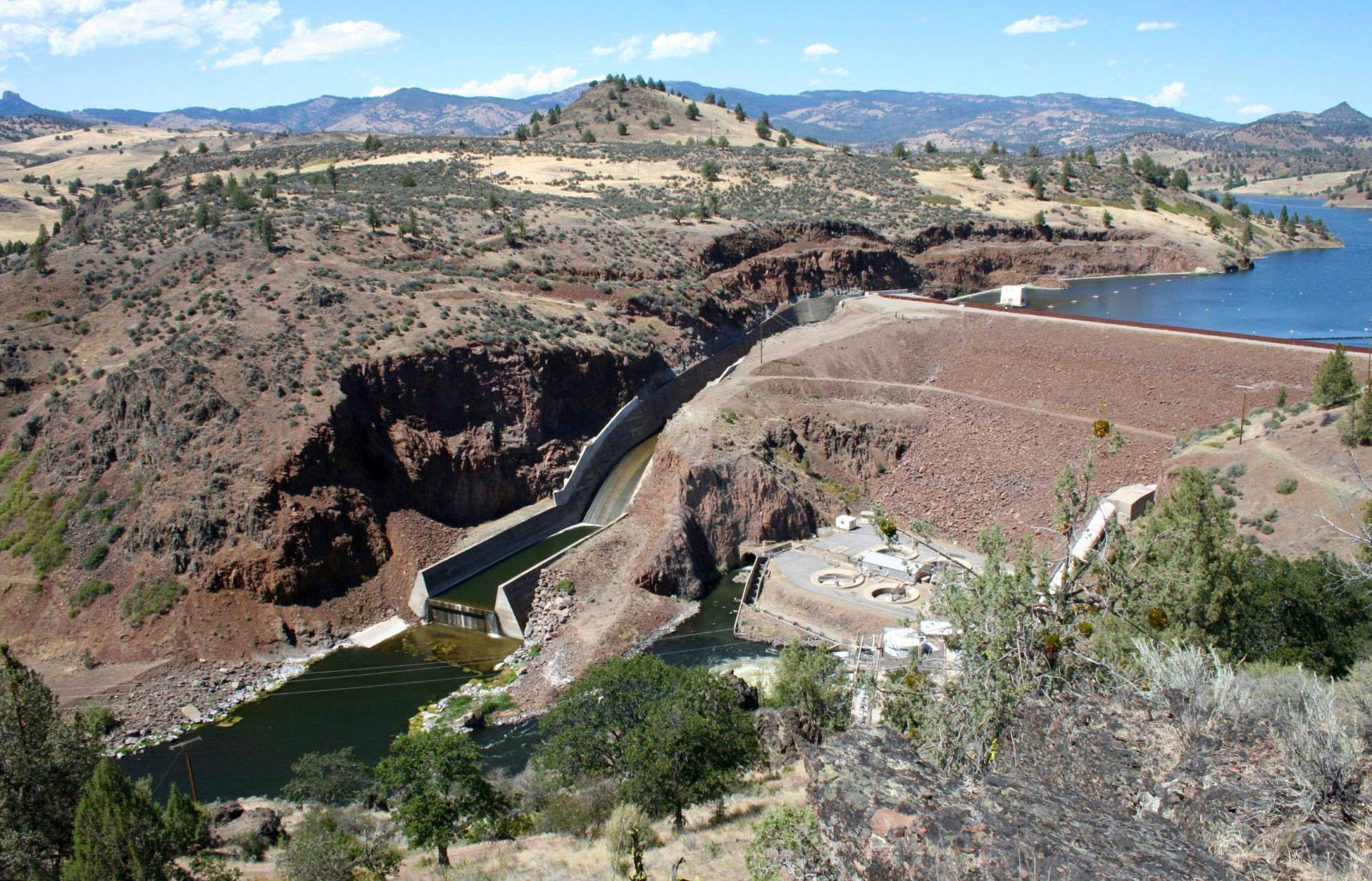The owner of four dams on the Klamath River and the nonprofit corporation created to take responsibility for their destruction recently filed long-awaited applications with federal regulators to remove the dams.
“This is a major milestone,” said Mike Carrier, chair of the nonprofit Klamath River Renewal Corp. (KRRC), an entity created to oversee the massive dam removal process. Federal officials estimate decommissioning and removal could cost at least $290 million, with that work to be paid for by ratepayers of PacifiCorp and the state of California’s Proposition 1.
Portland-based PacifiCorp submitted paperwork on Sept. 23, seeking permission from the Federal Energy Regulatory Commission (FERC) to transfer ownership of the dams to the Klamath River Renewal Corp. KRRC joined that application, and is separately asking FERC to approve dam decommissioning.
“Early 20th century hydropower that was constructed didn’t foresee some of the environmental consequences that it would create, such as sediment behind dams, and the blockage of fish passage for species like salmon and steelhead,” KRRC’s Carrier said. He added that a dam relicensing process made complicated by environmental regulations influenced PacifiCorp’s decision to retire the hydropower projects as well. “They penciled it out and realized that the best business decision would be to agree to dam decommissioning and removal.”
The Klamath River, which flows 263 miles from the plains of south-central Oregon to the rocky shores of California, is claimed by two states’ worth of farmers, fishers, native tribes and environmental groups.
It once teemed with chinook, coho, steelhead and other trout runs throughout the year. Several Native American tribes, including Yurok, Hoopa and Karuk nations in California, have relied on its waters for thousands of years. Diverse interests have sparred over the Klamath for more than a century, when upriver dams began to enable irrigation, control flooding and create hydroelectricity.

